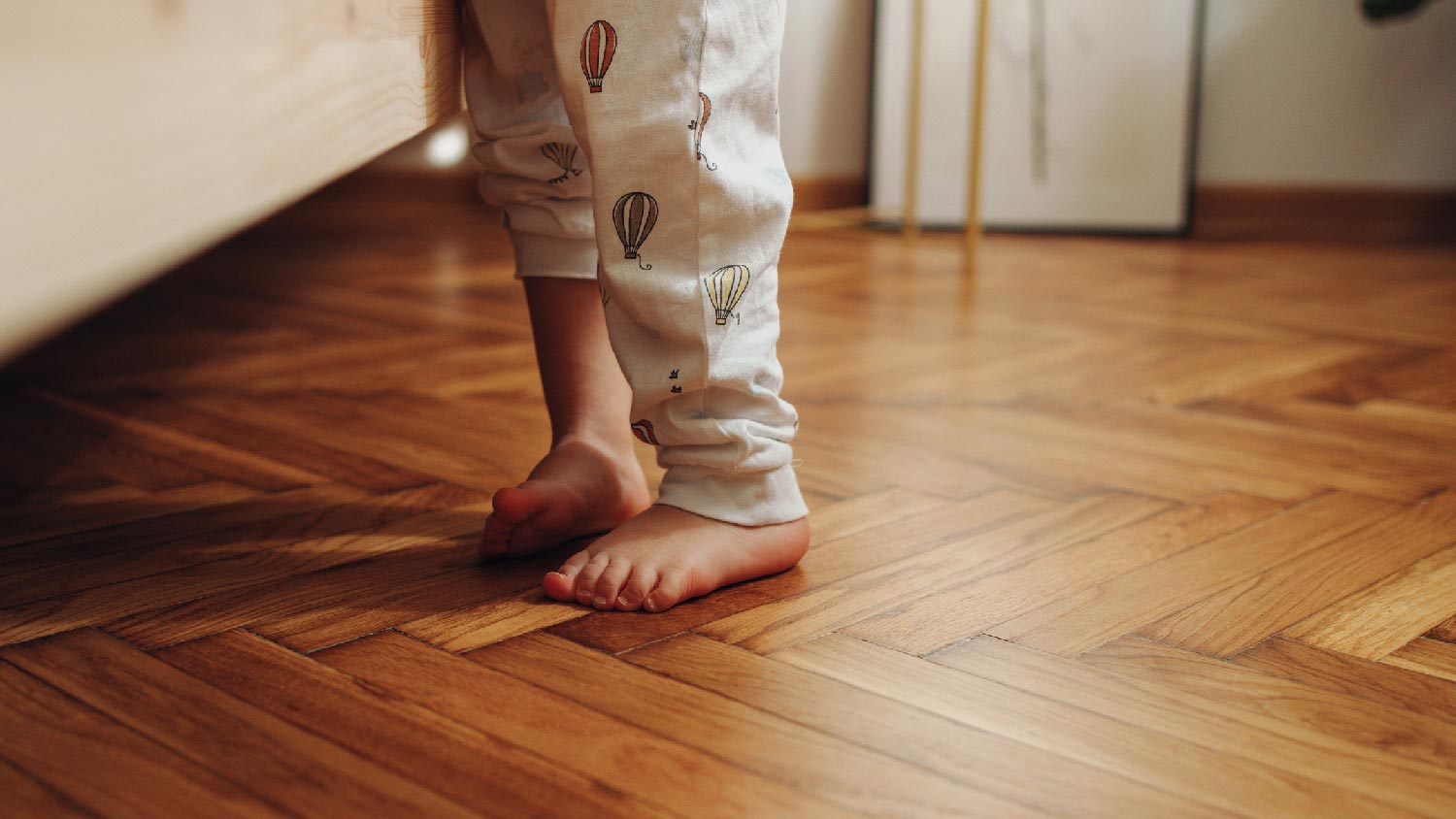
The cost of a structural engineer is easily justifiable given the value they bring to the table. Use this guide to see what hiring your professional will total in Philadelphia, PA.
A little squeak can mean big structural problems


Squeaky floors can be caused by minor issues but can sometimes indicate larger structural problems.
Structural issues that cause squeaky floors include a shifting foundation and damaged subfloor.
A structural engineer can determine if your squeaky floors are a sign of structural damage.
Hardwood floors add a classic, upscale feel to your home—that is, until you step on a squeaky floorboard. Squeaky floors can be annoying, but they can also indicate your home has a structural problem. We’ll explore what can cause a squeaky floor and how to know it’s time to call in the pros.
Squeaky floors can be caused by a number of issues, ranging in severity from “nothing to worry about” to “time to call a structural engineer.” Floorboards squeak from friction when parts of the floor that don’t normally move rub against each other under pressure when you walk on them, but the causes of that friction vary.
Moisture issues are one of the most common causes of squeaky floors. Wood swells when exposed to moisture and shrinks in its absence, so humidity can have a significant effect on your floorboards. Excess humidity can reduce the amount of space between boards, causing them to rub together, and a lack of humidity can create space where parts of the floor can move from their original position.
New hardwood floors are also prone to squeaking. As the wood adapts to the temperature and humidity in your home, it swells and contracts, causing it to squeak. Squeaks in new flooring are very normal and tend to go away over time as the floor settles.
While humidity can affect your floorboards, other kinds of moisture problems can damage your subfloor. Squeaky floors can be a result of excess space between the subfloor and the joists or from floorboards not being properly secured to the subfloor. Damaged subfloor is a structural issue, and it should be replaced to keep your home safe and structurally sound. Replacing subfloor costs an average of $3 to $10 per square foot.
Some warning signs of structural damage in your home include curving interior walls, horizontal cracks in the foundation, and sagging floors or roofs. Calling in a structural engineer to take a look as soon as you notice these signs can save you from a bigger problem later on.
Squeaky floors can also be a sign of a settling or shifting foundation. As the foundation settles, space is created between parts of the floor, leading to movement and squeaking. A shifting foundation can be a very normal part of your house settling, but it can also be a cause for concern. Foundation issues can cause serious structural damage, so it’s best not to ignore any signs that something is wrong.

Can you fix a squeaky floor yourself? Depending on the cause of the squeak, you may be able to repair a creaking floor as a DIY project. If the issue is a loose floorboard or a small space between the floor and subfloor, you may be able to handle it yourself. For larger problems with the subfloor, hire a pro who can fix squeaky floors.
If there’s a chance your squeaky floors are indicating a structural problem, hire a structural engineer to assess the issue. A local structural engineer can inspect your foundation, joists, and subfloor to identify the issue and come up with a plan to fix it. It’s better to be safe than sorry when it comes to potential structural damage, so invest in the cost of a structural engineer for peace of mind that your house is safe and stable.
From average costs to expert advice, get all the answers you need to get your job done.

The cost of a structural engineer is easily justifiable given the value they bring to the table. Use this guide to see what hiring your professional will total in Philadelphia, PA.

The cost of a structural engineer is easily justifiable given the value they bring to the table. Use this guide to see what hiring your professional will total in New York, NY.

The cost of a structural engineer is easily justifiable given the value they bring to the table. Use this guide to see what hiring your professional will total in Kansas City, MO.

Wondering what a lally column is? Learn what it is, how it works, when you need one, and the pros and cons in this simple guide.

Before removing a wall, make sure it’s not load-bearing. Learn the benefits of hiring a structural engineer to check if a wall is load-bearing.

Do you have an upcoming construction project and aren’t sure whether hiring a structural engineer vs an architect is better? Find out here.